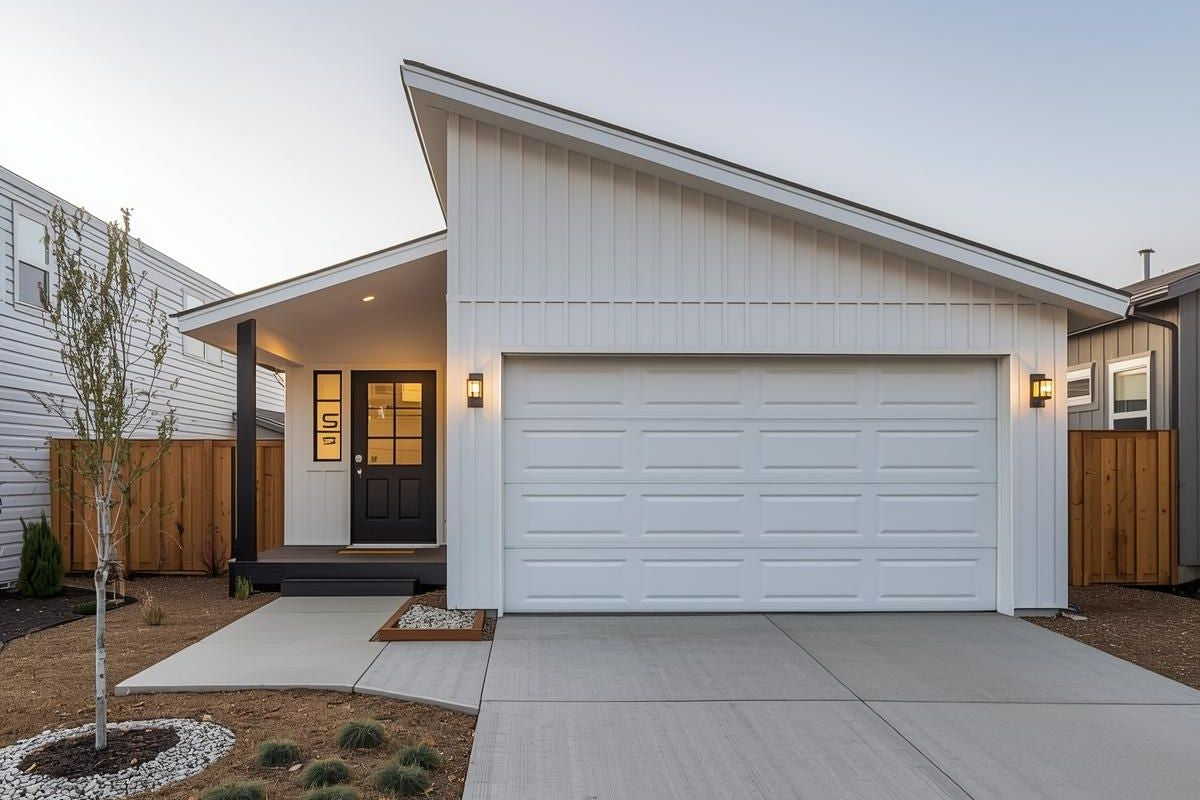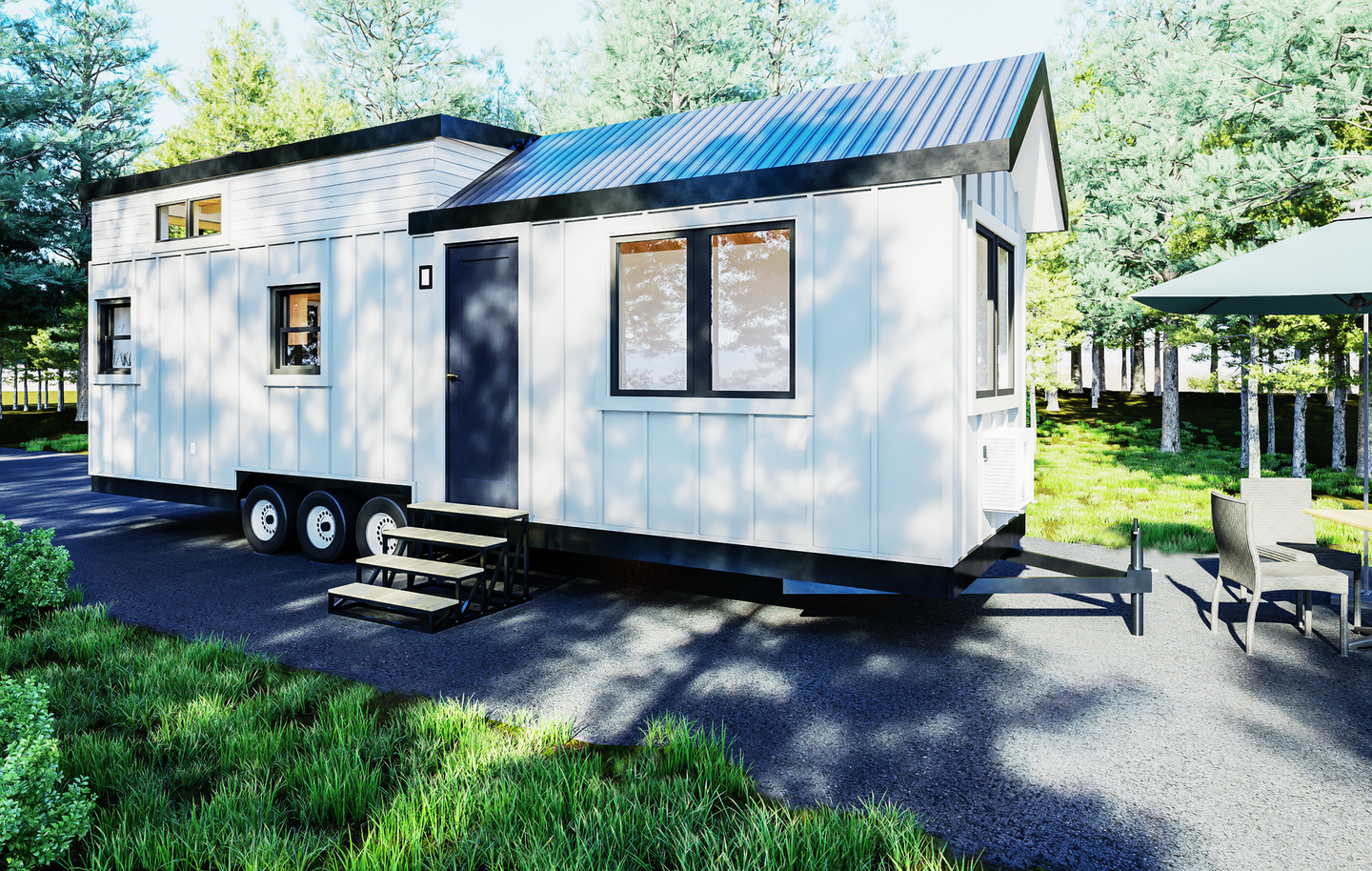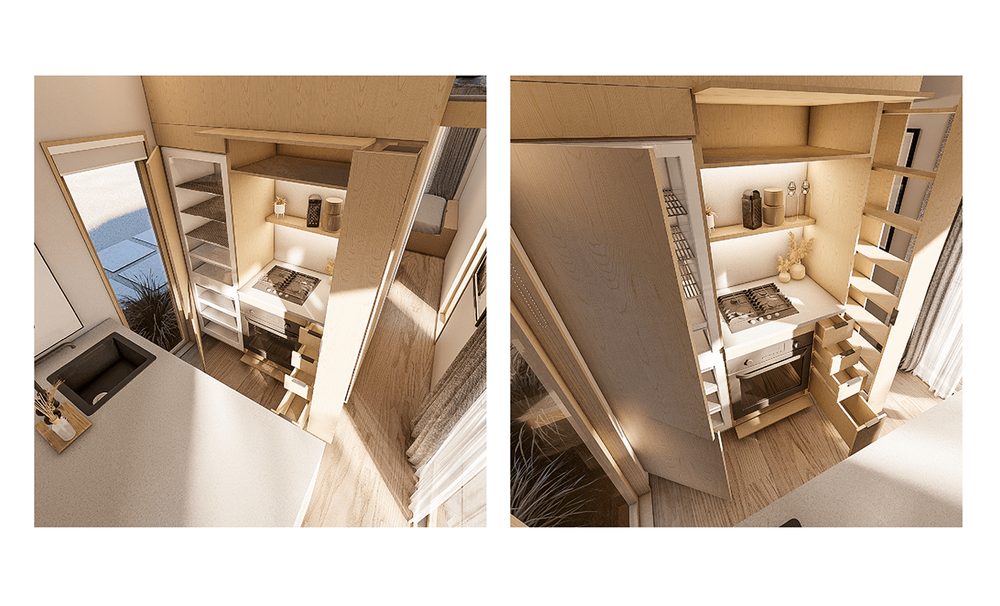Tiny houses demand precision. Every square inch has a job, every material choice has ripple effects, and every opening influences light, airflow, energy use, storage, and security. That is why the large moving opening most people overlook deserves your full design brain: the garage door or multiuse lift opening.
Whether you are planning a tiny home with a gear bay, a micro-workshop, an ADU with flexible living space, or a trailer-mounted build that needs a convertible wall, treating the door as a core building system brings substantial gains in comfort, efficiency, and daily convenience.
This guide unpacks door types that fit small footprints, how to spec low-headroom hardware, insulation tactics that actually work, and the safety and smart-tech moves that turn an ordinary panel into a high-performing architectural element for tiny living.
Choosing a door style for tiny footprints
Sectional overhead doors
The familiar residential option, but scaled appropriately. A 6 to 8 foot width fits many tiny home envelopes, with panel heights tuned to your wall rhythm. Look for low-headroom track kits that keep the horizontal track tight to the ceiling and permit lofts or storage shelves above.
Roll-up steel curtains
A great choice for extreme headroom constraints or when the ceiling must remain clear. The coil can hide in a soffit bump-out. Roll-ups are rugged and resist wind, which is valuable for mobile or coastal builds.
Bifold or hydraulic one-piece doors
Favored in modern cabins and studios for creating a convertible indoor-outdoor wall. They act as an awning when open, expanding covered space on rainy days. Weight and power needs are higher, so plan structure and wiring accordingly.
Carriage-style swing doors
Perfect for aesthetics and for sites where overhead track would clash with interior storage. Hinged pairs or a single out-swing slab require clear swing area and careful weather detailing, but they can be lighter than you think when framed with composite or aluminum.

Low-headroom, no-problem: hardware that fits
Tiny houses often cap interior height to meet road rules or zoning. If you are installing a sectional door:
-
Use dual-track low-headroom kits that shift the top roller to a second track, reducing required backroom.
-
Choose short-radius tracks for tight curvature and minimal ceiling clearance.
-
Specify jackshaft openers that mount on the torsion tube, not in the ceiling, freeing overhead space for lofts, storage, or ductless heads.
-
Add soft-start, soft-stop control to limit vibration through the lightweight framing common in small builds.
Insulation and air sealing that matter in small volumes
Small interiors react quickly to temperature swings. A leaky or uninsulated door can turn a cozy room into a sauna or an icebox in an hour. Prioritize:
-
Polyurethane-injected steel panels with high R-values relative to door thickness.
-
Continuous weather seals at jambs, header, and sill. Select a flexible bottom rubber that stays pliable in cold weather and seals against slightly uneven slabs or trailer decks.
-
Thermal breaks in aluminum frames to block conductive heat loss.
-
Airtightness detailing at framing interfaces: backer rod and high-quality sealants, not just canned foam.
When the door doubles as a glazed wall, choose low-E units and consider interior shades or exterior screens to control solar gain. You will feel the difference when cooking or sleeping near that opening.
Sound, privacy, and daylight
Tiny homes thrive on adaptable light. Top-section lites or narrow vertical windows balance daylight with privacy. Frosted or fluted glass obscures sightlines without killing brightness. For street-facing sites or close neighbors, use acoustic laminated glass or add a secondary interior panel to dampen sound.
Smart features sized for small living
Modern openers are not just for big garages. Compact, Wi-Fi-enabled jackshaft units fit tiny spaces and give you:
-
Real-time status and remote open/close
-
Geofencing to auto-close when you drive away
-
Battery backup so you are never locked out during an outage
-
Integrated LED arrays that replace separate fixtures
If you store a bike quiver, paddle boards, or tools, motion-activated LEDs are a quality-of-life upgrade that also boosts safety during nighttime returns.
Wind, travel, and structural considerations
For mobile builds or windy sites, verify wind-load ratings and fastener schedules. Add anti-lift devices and struts on wider doors to maintain panel rigidity.
Trailer-mounted tiny homes benefit from lighter panels with aluminum skins over foam cores to keep weight in check. If the door forms part of your shear plane, coordinate with your engineer so the wall still meets lateral bracing requirements.
Safety first in small volumes
In tight interiors, clearances are minimal. Keep wall buttons at least five feet high, route tracks away from loft ladders, and guard belts or chains where bunks run close to the mechanism.
Test the auto-reverse monthly with a small block and clean the photo eyes regularly. If you ever see a gap in a torsion spring or frayed cables, stop using the door until a pro repairs it. High-tension components are not DIY.
Maintenance cadence for long life
Tiny homes reward routine. Add these tasks to your seasonal checklist:
-
Every 6 months: silicone-lube hinges, roller stems, and springs; tighten track fasteners; check bottom seal; clean sensors.
-
Annually: professional tune-up for balance, cable integrity, and opener force limits; inspect for corrosion from road salt if your home is mobile.
-
After storms or long trips: inspect fasteners, brackets, and track alignment; verify geofence and alert settings in your opener app.

Repair or replace: a small-home decision tree
Lean toward repair when the skin is intact, insulation is adequate, and symptoms are noisy rollers, minor alignment, or tired seals.
Choose replacement when repeated repairs stack up, the door lacks insulation, or the opening is being re-planned for a loft or studio function that needs a different door type.
In small homes, switching from a standard opener to a jackshaft or from sectional to roll-up can unlock cubic feet that transform storage and daily living.
Where help fits into a tiny-home plan
Even skilled builders call pros for spring work, cable rewinds, or control board issues. Working with a team that handles specification, installation, and service across door types keeps your travel life simpler and your small space safer.
Midway through your project planning or during a retrofit, it can help to scan product options, book a tune-up, or schedule an inspection. If you are researching service or want to resolve a noise or sealing issue before winter, a single stop at garage door repair shows what a full-service approach looks like for compact and conventional openings alike.
Tiny-home use cases that benefit most
-
Gear garage plus living loft: low-headroom sectional with jackshaft opener preserves loft height.
-
Convertible studio wall: bifold or hydraulic one-piece creates a covered deck when open.
-
Mobile workshop: roll-up curtain protects tools and keeps ceiling clear for dust collection.
-
Indoor-outdoor kitchen: glazed top section or full-glass panel with interior shades for privacy and solar control.
Design the door with the space’s best moments in mind. If you imagine hosting friends with the wall open to a deck, invest in a door system that makes that scene effortless and safe.
Final take
In tiny homes, doors are not afterthoughts. The right garage or lift door solves multiple problems at once: energy, light, storage, security, and circulation. Choose a style that fits your plan, spec hardware that respects headroom, seal and insulate like it matters, and let smart controls remove daily friction.
With a little foresight and regular care, your biggest opening becomes a quiet, reliable partner in small-space living.
Superior Garage Door Repair
(888) 342-6664
247superiorgaragedoor.com





Share: